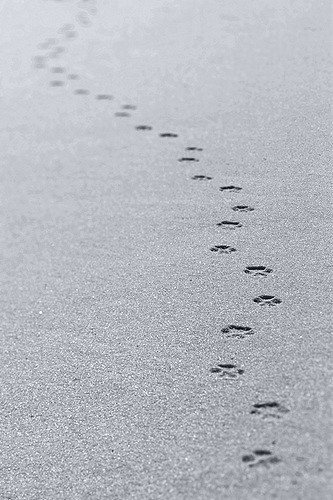 Portland photographer Chris Graham shows us the drama of early morning and evening lighting. Many of his photos can be viewed on his website.
Portland photographer Chris Graham shows us the drama of early morning and evening lighting. Many of his photos can be viewed on his website.
Can you tell where the photos above were taken? To find out and see more … Continue reading

 Portland photographer Chris Graham shows us the drama of early morning and evening lighting. Many of his photos can be viewed on his website.
Portland photographer Chris Graham shows us the drama of early morning and evening lighting. Many of his photos can be viewed on his website.
Can you tell where the photos above were taken? To find out and see more … Continue reading
The Jonah Center recently became aware of the artwork of Steve Cronkite, a longtime Middletown resident and artist. Steve is a semi-retired civil engineer who enjoys biking and paddling in our area. He and his husband Paul love to grow interesting trees and shrubs in their yard. Steve volunteers as a literacy tutor and is curating a new pinetum at Wickham Park in Manchester. Other paintings by Steve may be viewed on his Instagram page @s.n.cronkite_art . (The pinetum, an aboretum of pines or conifers generally, may be viewed on Instagram @wickham_park_tree_fan.)
The paintings below help us appreciate the special beauty in our own corner of the world. Do you know the scenes or locations featured below? Answers can be found at the bottom of this post.
Where is this paddler? What bridge is shown, from which direction?

What is the name of this hill, and where was the artist standing?

Can you guess what kind of tree this is, and where do these trees grow locally in abundance?

This type of tree is large and rugged. It thrives in an urban environment, even under harsh conditions.

Answers:

Answers, clockwise from upper left:
Green Wheat Fields, by Vincent Van Gogh; Uferlandschaft, by Paul Cezanne; Breton Landscape by Paul Gauguin; and Path in the Wheat at Pourville, by Claude Monet.
*pronounced Es-SPAHL-Yay
 I’ve often wondered about espaliered trees, and they even figured in a short piece of fiction I once wrote. Espalier is the art of training dwarf trees to grow in a flat plane along a wall, fence, or trellis. They create an atmosphere of mystery, wonder, and an evocation of some kind of Garden of Eden. I’ve stopped to admire them at botanical gardens and occasionally at Ballek’s nursery in East Haddam. Because we see them in famous gardens, we tend to think of them as expensive or unattainable, as something no longer possible. As you will learn, you can easily grow an espaliered fruit tree for under $20 (under $30 if you choose a tree with four different types of apple or pear bearing branches) but you’ll need some simple hardware that might cost another $15. Or, you could just use bamboo, the way growers do. You will likely have fruit much sooner. I never bought an espaliered fruit tree from a nursery, but I did buy a very tiny birch that Nancy Ballek had pruned on dwarf rootstock that was highly contorted. Sixteen years later it is still 30” tall and about 40” wide. That demonstrates the power of dwarf rootstock. And that is the secret of espalier. Continue reading
I’ve often wondered about espaliered trees, and they even figured in a short piece of fiction I once wrote. Espalier is the art of training dwarf trees to grow in a flat plane along a wall, fence, or trellis. They create an atmosphere of mystery, wonder, and an evocation of some kind of Garden of Eden. I’ve stopped to admire them at botanical gardens and occasionally at Ballek’s nursery in East Haddam. Because we see them in famous gardens, we tend to think of them as expensive or unattainable, as something no longer possible. As you will learn, you can easily grow an espaliered fruit tree for under $20 (under $30 if you choose a tree with four different types of apple or pear bearing branches) but you’ll need some simple hardware that might cost another $15. Or, you could just use bamboo, the way growers do. You will likely have fruit much sooner. I never bought an espaliered fruit tree from a nursery, but I did buy a very tiny birch that Nancy Ballek had pruned on dwarf rootstock that was highly contorted. Sixteen years later it is still 30” tall and about 40” wide. That demonstrates the power of dwarf rootstock. And that is the secret of espalier. Continue reading
Submitted by Jane Harris
 The Middletown Garden Club has begun its eighth season of gardening on the rooftop of the Community Health Center. For the past seven years, our partner has been MARC, but Covid-19 has put that relationship on hold indefinitely. With approximately 500 square feet of irrigated raised beds, the rooftop garden has been highly productive. The carefully engineered soil and water-recapture system work to make the beds ideal for vegetable and root crops. Each year, we “open up” the gardens by removing any weeds that may have germinated over the winter, and begin to plan a new lay-out for the crops. We rotate plant locations to avoid any possibility of disease build-up in beds, especially where tomatoes are grown. Continue reading
The Middletown Garden Club has begun its eighth season of gardening on the rooftop of the Community Health Center. For the past seven years, our partner has been MARC, but Covid-19 has put that relationship on hold indefinitely. With approximately 500 square feet of irrigated raised beds, the rooftop garden has been highly productive. The carefully engineered soil and water-recapture system work to make the beds ideal for vegetable and root crops. Each year, we “open up” the gardens by removing any weeds that may have germinated over the winter, and begin to plan a new lay-out for the crops. We rotate plant locations to avoid any possibility of disease build-up in beds, especially where tomatoes are grown. Continue reading
 In the course of our campaign to increase Middletown’s tree-planting budget, some people told us they would like to donate their own money to plant trees. That’s commitment! Then we heard about Sustainable CT’s program to match dollar for dollar any community-generated funds raised for qualified projects through IOBY (In Our Back Yards) – a crowdfunding service.For example, your $20 gift will instantly become a $40 gift.
In the course of our campaign to increase Middletown’s tree-planting budget, some people told us they would like to donate their own money to plant trees. That’s commitment! Then we heard about Sustainable CT’s program to match dollar for dollar any community-generated funds raised for qualified projects through IOBY (In Our Back Yards) – a crowdfunding service.For example, your $20 gift will instantly become a $40 gift.
Sites for new trees in Middletown and Portland are being considered. In Middletown, priority will be given to the North End, where the tree canopy is even sparser than in other parts of the city, and to high-visibility commercial corridors. In Portland, priority will be given to areas in the town’s central residential and commercial area where trees were removed for sidewalk replacement or due to disease. Funds will be allocated between the towns based on the residence of donors.
Click here to read more or donate. (100% of all donations will be used for trees; not administration.)
Chantal Foster, Portland resident, is an accomplished hiker. We are delighted to share her fascinating, humorous, and gripping tale of friendship, strength, trail sanitation regulations, and the effects of Acute Mountain Sickness as part of our “Alive Outside” creative writing initiative. Many of us are not capable of such an adventure ourselves, but this story will make you feel (almost) as if you were there.
Climbing Mt. Whitney, by Chantal Foster
Back in the beginning of 2018, esteemed hiker Bill Korp (aka Cupcake) came up with the harebrained idea of hiking Mt. Whitney in CA as a way of commemorating his 70th birthday. Apparently, he didn’t feel like doing it alone, so he asked three of his favorite, well, maybe not favorite but “good friends,” well, maybe not good friends, but he did ask Steve Crusberg (Shuttle), Gina Wildermuth (Nurse), and yours truly (Olive Oil) to tag along.
Whitney is the highest peak in the contiguous 48 states at 14,496 feet (or 14,505, depending on where you look) which makes for a busy trail — so busy that would-be hikers need to apply for a permit through a lottery system. Nurse and Cupcake coordinated the necessary paperwork to apply for such in February and in April, with luck on our side, we were awarded a permit to hike Whitney on the auspicious date of Wednesday, July 25th.
Travel and lodging plans were discussed, determined and made, and we proceeded to study how to hike “Whitney in a Day,” training accordingly while waiting for the big event.
Soon, mid-July was upon us. With much training, a couple of challenging “prep hikes” under our belts and a lot of anticipation, we flew into Las Vegas and made the approximate 5-hour drive west to the town of Lone Pine, CA where we would make our home for the next five days. On our way, we passed through Death Valley with elevations around three hundred feet BELOW sea level. We would be on both the highest and lowest points of the lower 48 during our trip.

Garden wildlife reminds me of teenagers – the critters eat distressingly huge meals then leave without communicating about what they have been up to or where they are going. Except in wintertime, of course, when they (the wildlife, not the teenagers) leave a tale of tracks in the snow.

I’m no great tracker, but with the help of my Peterson Field Guide to Animal Tracks I can at least tell the difference between a fox footprint and that of a dog, trace the travels of the rabbit around my yard, and discover that it’s a porcupine that has been nibbling the branch tips off the hemlocks. There are all sorts of insights to be had from these vestiges. The dog, for example, is likely to wander, sniffing here and there, whereas the fox typically trots in a straight line – one is sure of an ample dinner while the other knows that it cannot afford to waste a single calorie in this harsh season. And by back-tracking the porcupine, I learn what crevice in the rock face across the road it has made into its den. That’s where I’ll set up my have-a-heart trap if the porcupines ravage my vegetable garden again next summer.
It was a string of five-toed footprints, each one not much bigger than a quarter, that told me to keep an eye on the wood pile. And my vigilance was rewarded one gray morning when I spotted a mink darting in between the logs, then re-emerging with a mouse in its jaws.
It’s a thrill to find evidence of such an uncommon (at least in my garden) species, but tracks of the commonest animals excite me just as much if they have a story to tell. A red feather and a spot of blood in a small snow crater told me all I had to know about the encounter of a cardinal and a hawk. And I still remember following across a snowy field next door to our yard the tracks of a Canada goose. Stooping to inspect, I found its toes had dug into the snow and the stride gradually lengthened until, suddenly, the tracks stopped – I, too, felt as if I had taken off. Continue reading